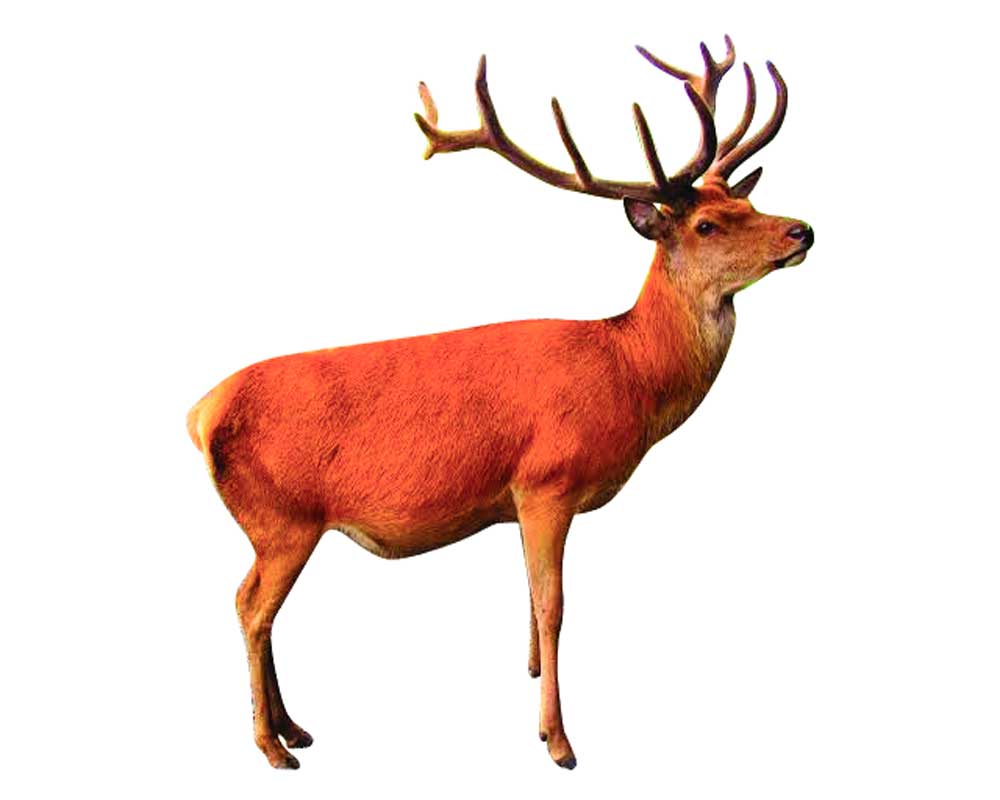Multiplication of red deer population in Scotland could not be on account of their fault but may be linked to the change in their genes due to climate change-induced warm weather, speeding up their breeding in the region.
A new study has said that Scotland’s red deer are altering their birthing patterns in order to adapt to global warming.
This finding has come in the light of the Scottish Government’s order of culling of the red deer whose population has multiplied over the years. It is estimated that the main highland range in Scotland now has about 4,00,000 of the animals.
Hence, while man-made climate change is having a serious impact on the wildlife animals — some are moving to cooler climes, some on the verge of extinction while a few like turtles are witnessing change in sex, red deer seems to be following the theory of evolution developed by Charles Darwin, said the scientists in the study published in the journal PLOS (Public Library of Science) Biology.
And this evolution is happening in decades, not centuries, they said after studying field records and genetic data collected on the four-legged animals on the Isle of Rum in Scotland over a 45-year period since 1972.
This is one of the first evidences of wild animals undergoing evolution process, said the scientists from the University of Edinburgh, Australian National University and the universities of St Andrews and Cambridge.
“Not only do warmer temperatures encourage deer to give birth earlier in the year, it has also meant the gene for breeding earlier has become more common among the deer,†said Dr Timothée Bonnet, of the Australian National University, who led the study. He explained that the deer that give birth earlier have more calves over their lifetime — which means they have more reproductive success.
“It is rare to see evolution over such a short period,†he said about the study “the role of selection and evolution in changing parturition date in a red deer population.â€
Previous studies have shown that the deer have been giving birth earlier since the 1980s, at a rate of about three days per decade. However, the new study says that female red deer — called hinds — give birth to a single calf each year, and those that reproduce earlier in the year have more offspring over their lifetime.
The gene which causes earlier birth is therefore much more common among the rum deer population over time. This is an example of natural selection, the theory of evolution developed by Charles Darwin, he added. The research shows that natural selection “may help populations adapt to climate warming.â€
Professor Josephine Pemberton, of the University of Edinburgh’s School of Biological Sciences, who was also involved in the study, added, “Long-term studies of individual lifetimes are one of the few ways to understand how populations respond to environmental change and how to manage its effects.â€
The Scottish Government has taken various steps to manage the burgeoning population of the animal, culling being one of them, in a bid to protect biodiversity as the deer are voracious eaters with high breeding rate. The figures are specific to the study site in highland in Sweden, but wildlife experts feel that such “evolution†reported by the red deer might be happening in other animals somewhere in the world.
“We all know that climate change is having serious impact on the wildlife world. This study shows that the new adaptation by the red deer may very well help their population thrive as the climate continues to warm, said Dr K SivaKumar, wildlife expert from Dehradun-based Wildlife Institute of India (WII).
He, however said, climate change is having impact in various other ways also. For instance, up to 93 per cent of green turtle hatchlings could be female by 2100, as climate change causes “feminization†of the species, he said citing a study conducted by the Researchers at the University of Exeter in the UK and the Marine and Environmental Sciences Centre in Portugal.
According to various studies, if we do not reduce our carbon emissions and instead allow global temperatures to rise by 4.5?C, up to half the animals and plants in some of the world’s most biodiverse areas could go extinct by 2100.
“In fact, even if we are able to limit global warming to the Paris climate agreement goal of 2?C, areas such as the Amazon and the Galapagos could still lose one quarter of their species,†noted the studies dwelling on the effects of climate change on 80,000 plants and animals in 35 areas.
Another study has found that local extinctions (when a species goes extinct in a particular area, but still exists elsewhere) are already occurring in 47 per cent of the 976 species studied, in every kind of habitat and climatic zone.
(The writer is Special Correspondent, The Pioneer. This article was published with support from the India Science Media Fellowship 2019 by the Welcome Trust/ DBT India Alliance and Nature India )


























